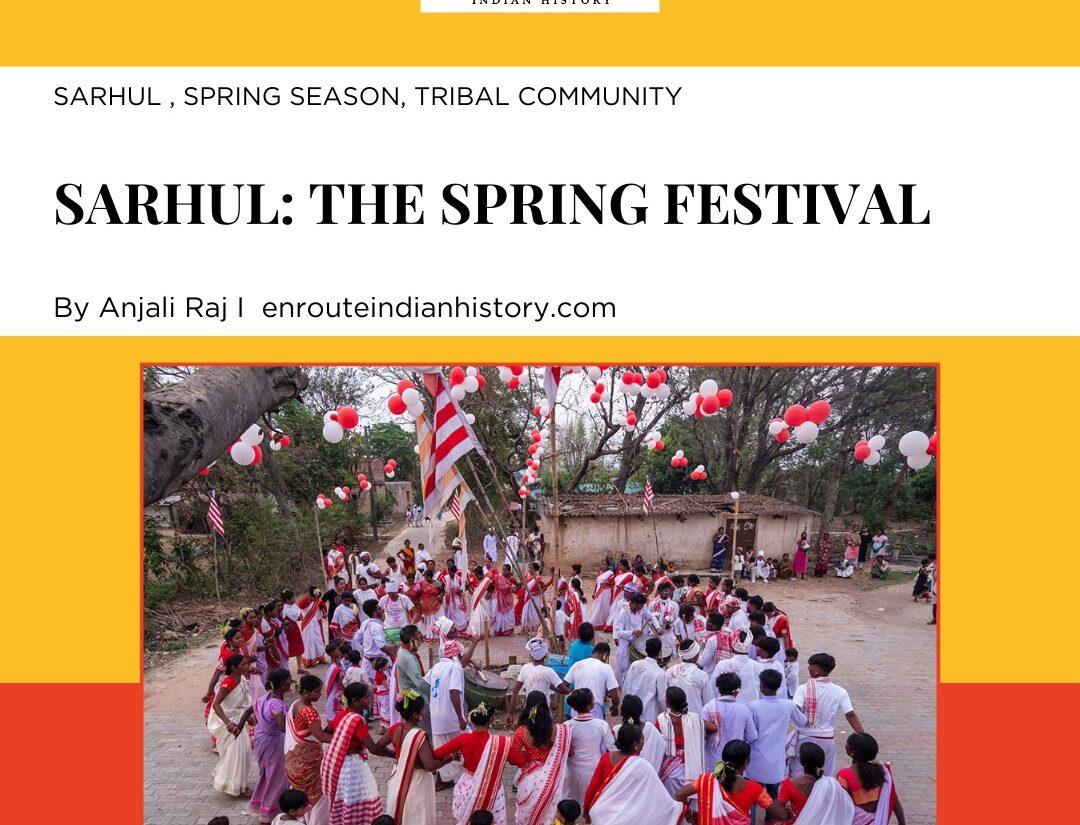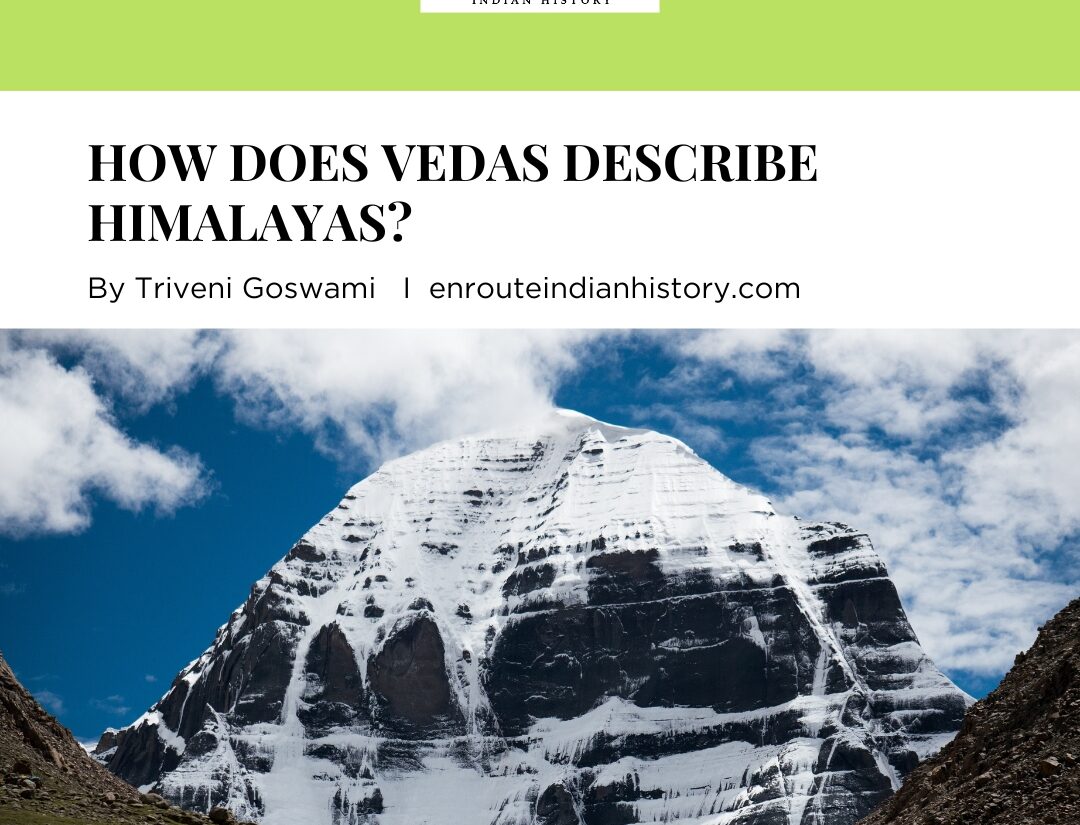
How Sarhul festival and sarnism become important identity for ORAON tribes?

[source; 121clicks.com, dance and music celebration after formal worship]
Sarhul, the spring festival, holds significant cultural importance for indigenous tribes such as the Mundas, Oraons, and Santhals. Particularly for the Oraon community, it stands out as the largest spring festival observed during the months of March and April. In their native language, it is referred to as “Khaddi,” symbolizing the symbolic union or marriage of the earth. The significance of the forest flower known as sakhua or Sal is paramount as it symbolizes the cultural importance deeply rooted within the forest ecosystem. Despite their inherent significance, forest flowers often go unnoticed, highlighting the need to acknowledge and appreciate their cultural and ecological value. During this festival, reverence is bestowed upon Dharti Mata, as, the wife of Lord Rama encompassing the celebration of all forms of nature.This festival exemplifies the indigenous tribes’ conviction in the autonomy of their nature-centric worship practices which shows their core value of religion different from brahamnical ideologies. It underscores their deep-rooted gratitude towards nature for the sustenance and resources it provides, showcasing a distinct cultural reverence for their environment and its bounty.
This festival provides a strong sense of identity, particularly for theOraon tribe who predominantly engaged in agriculture, adheres to Sarnaism as its religious belief system which is not Hinduism revering nature as integral to their spirituality, this community celebrates the festival by offering homage to trees and various natural elements.
Origin
The history of sarhul revolves around many legends and folktales one such tale reveals it was celebrated in spring when the villagers offer prayers to the village god who also considerd as tribe protector with the blooming flowers during spring.Numerous legends surrounding the Sarhul festival are cherished among the Oraon tribes as well, among these traditional tales is the narrative of Sarem Boodhi, a demon vanquished by a courageous youth from a tribal village wielding simple tools such as sticks. Hence, the festival is also referred to as “Khaddar GahiKhaddi,” or the festival of the brave. As word of this feat spread to various villages, jubilant celebrations ensued, leading to the observance of the festival on different days throughout the spring season. The Oraon tribe celebrated from “Phaagun” or March to “Jeth” or June, this festival holds various reasons for its observance. Several Sarhul stories revolve around nature’s splendor, illustrating its significance and the need for its preservation and growth. Others depict the trials of life and the ensuing joy upon achieving goals, prompting celebratory moods. Traditional narratives also underscore the value of familial bonds, emphasizing love, care, and respect within families. They highlight the arrival of new generations and the happiness they bring. In essence, the history and legends of the Sarhul festival signify the celebration of fresh starts, new life, joy, and prosperity.
How it is celebrated?

[ source: 121clicks.com; pahan wife performing the ritual of lota pani, washing the feet of pahan]
The Sarhul festival, observed in various Oraon villages, commences on the third day of the Chaitra month. Rituals are conducted within the sacred Sal Grove, under the canopy of the Sal tree, led by the chief priest (Pahan) and assisted by the Panbhari assistance of pahan. This festival spans two days: the initial day known as Upaas and the subsequent day termed Chengna Kati. Preceding the feast day by one or two weeks, the Pahan and Pujari of the village, under the direction of the village Panch, announce to the villagers the upcoming fasting day and festivities. Grains are collected from each household, and the Pahan crafts homemade liquor for the celebration. During the initial day, known as “Upas,” no agricultural activities take place. The village Pahan observes fasting, while in every Oraon village, the source of drinking water, “Dadhi-Kanta,” is meticulously cleaned. At night, the Pahan and Pujari fetch two pots of water and place them under the Sal tree, referred to as “Shaken Pani.”on the fest day or chengnakatiday the main ritual commences with the washing of the deity’s feet, symbolizing a gesture of welcome. This ceremonial act is conducted by the priest’s wife, after which the worship ceremony unfolds. Offerings, including white animals, fowls, milk, and cotton cloth, are presented as part of the worship proceedings. Oraon women do fast The Pahan performs a special puja dedicated to Sarna Devi, also known as Chala Pacho, as it is believed that the Sal tree serves as the sacred dwelling of Sarna Devi. Revered as the mother goddess who safeguarded the Oraon tribes and provided for them, according to Sarna religion, the deity is believed to reside within the wooden staff kept at Chala-Kutti, an auspicious location within the Pahan’s residence. A stick crafted from Sal tree is also placed at this site, signifying the presence of Sarna Devi.
Another longstanding ritual of the Oraon tribe involves offerings of animals and birds such as white goats, white fowls, white milk, and white cotton cloth. Following the worship ceremony, the Shakun Pani, which is left overnight around the Sal tree, is examined. If the water level decreases, it indicates the likelihood of reduced rainfall, whereas an increase suggests abundant rainfall.
Among all the rituals, the most significant is the symbolic union of the sky and earth, symbolized by the priest and his wife. This ceremonial marriage is conducted to guarantee the fertility of Mother Earth. n rural settings, a community dance ritual is enacted by members of an Oraon tribe, forming a circular configuration around a designated Sal tree while holding hands. Conversely, in urban environments, similar dance performances serve as symbolic expressions of communal unity and solidarity.

[ sources: 121clicks.com; famous community dancing]
Sarna Devi, Sal Tree and Oraon Tribe
The Sarna religion, distinct from the Hindusim tradition, is deeply entrenched in nature worship. The Oraon tribe adheres to this belief system, venerating Sarna Devi for her role in sustaining their livelihoods. Spring holds particular significance for the Oraon people, as it brings favorable agricultural conditions, for which they express gratitude to Sarna Devi. Central to their reverence is the Sal tree, from which they derive spiritual significance and respect for forest flora. Emphasizing a core ethos of environmental stewardship, the tribe celebrates Sarhul to honor spring and demonstrate their appreciation for nature. Individuals from this tribe, such as my acquaintance, exhibit a profound commitment to nature conservation and oppose deforestation, reflecting their cultural identity and ideological convictions. It is imperative to acknowledge the rich tapestry of tribal cultures, including their strong affinity for nature, often overlooked in mainstream discourse.tribe, I’ve come to recognize that their dedication to preserving nature transcends mere belief; it embodies a fundamental aspect of their identity. Engaging in dialogue with members of the Oraon tribe reveals their profound reverence for nature, exemplifying a robust commitment to its conservation. Through interactions with a friend from this
REFRENCES
History and legends of Sarhul festivals.
https://www.sarhulfestival.org/history-and-legends-of-sarhul-festival.html#google_vignette
A brief of the sacred groves of Jharkhand and their non brahmin priest
https://www.researchgate.net/publication/347353358_A_brief_study_of_the_sacred_groves_of_Jharkhand_and_their_non-brahmin_priests
Tribal festival by B K Jena
https://www.researchgate.net/publication/361318999_Tribal_Festival_By_B_K_Jena
Recent development in historical and archaeological researches in Odisha
https://books.google.com/books?hl=en&lr=&id=gv8OEAAAQBAJ&oi=fnd&pg=PA171&dq=sarhul+festival+of+jharkhand+tribe&ots=np3EnBEqZf&sig=vZEML8E8jQVglIPWAY66BKs5Huw
The role of sarna in forest conservation and wild reprevention: An indigenous
Tribal religion of India
https://www.researchgate.net/publication/376796626_The_role_of_Sarna_in_forest_conservation_and_wild_re_prevention_An_indigenous_tribal_religion_of_India
- May 15, 2024
- 6 Min Read
























